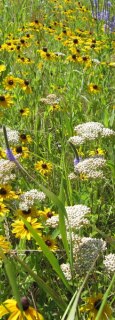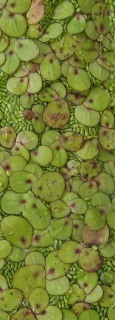Assembly and maintenance of grassland communities
 In colloboration with Jean Knops, we are examining the mechanisms by which diversity in prairie communities is established and maintained. Novel quantitative tools have enabled us to quantify the importance of temporal fluctuations in determining community diversity. Ongoing data collection will identify the major factors governing community structure.
In colloboration with Jean Knops, we are examining the mechanisms by which diversity in prairie communities is established and maintained. Novel quantitative tools have enabled us to quantify the importance of temporal fluctuations in determining community diversity. Ongoing data collection will identify the major factors governing community structure.
This work includes observational and experimental plots in the central Platte River Valley of Nebraska.
These plots are the same fields in which sandhill cranes and whooping cranes use during migration so this work has immediate conservation implications, in addition to broader lessons that may inform grassland management across the Great Plains.
Testing the effects of environmental fluctuations on food webs in duckweed communities
 A major questions under current investigation is how fluctuating environments will alter food web interactions, tested in a duckweed-aphid community. This work tests basic theoretical predictions that temporal fluctuations in environmental conditions can alter indirect interactions in food webs.
A major questions under current investigation is how fluctuating environments will alter food web interactions, tested in a duckweed-aphid community. This work tests basic theoretical predictions that temporal fluctuations in environmental conditions can alter indirect interactions in food webs.
These ideas are being tested in an system of consisting of multiple duckweed species and their herbivores in laboratory microcosms. Projects in this area of research include quantitatively detailed understandings of food web components, as well as related general theory.
This work as broader implications for our understanding of the implications of global climate change for biological systems.